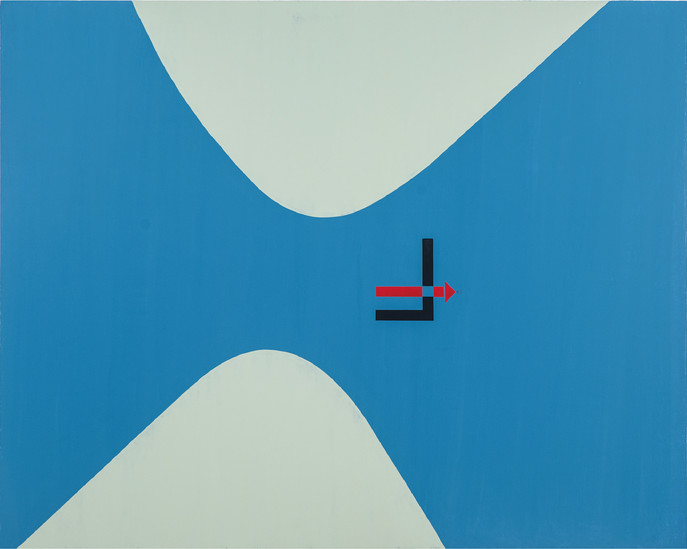DAVID DIAO 刁德谦
b. 1943, works and lives in New York

Introduction
New York School abstract painter David Diao’s early works of the 1960s and 1970s are characterized by an earnest desire to contribute to the Modernist canon, while questioning its lineage and theoretical underpinnings. Early influences were Barnett Newman, a significant figure through Diao’s career, and the hard-edge painter Al Held. By the early seventies, Diao’s formalism was inflected with the social, cultural, and political. This has remained the primary preoccupation of Diao’s work ever since. However, in the mid-eighties, Diao’s style shifted radically, as he began incorporating silkscreened images, vinyl lettering, hand-drawn marker, and painted words, detailing his personal life and practice. Combining his radical formalism with avant-garde iconography, identity politics, and autobiography––namely, his Chinese identity as perceived by Western audiences, and his formative years as a boy in China, despite coming of age in America––Diao confronts the complexity of histories, whether they are canonized, global, or private, all of which are deeply personal to him.David Diao (b. 1943, Chengdu) began making paintings in 1964, nine years after moving to New York from Hong Kong. He received his B.A. from Kenyon College and was on faculty at the Whitney Museum Independent Study Program from 1970 to 2000. In 2015, the Ullens Center for Contemporary Art, Beijing, staged a retrospective of 115 works, his largest ever exhibition. Other recent exhibitions include: M+ Sigg Collection: From Revolution to Globalisation, M+ Museum, Hong Kong (2021); New York: The 1980s; Part II, Consortium Museum, Dijon, France (2019); Bauhaus: Utopia in Crisis, Camberwell Space, London, U.K. (2019); Whitney Biennial 2014, The Whitney Museum of American Art, New York, U.S.A (2014).
Diao’s works are included in the collection of Museum of Modern Art and Whitney Museum of American Art, New York, U.S.A., the San Francisco Museum of Modern Art, San Francisco, U.S.A., the Hirshhorn Museum and Sculpture Garden, Washington, U.S.A., the Fonds National d’art contemporain, Paris, France, the M+ Collection, Hong Kong, and the Taipei Fine Arts Museum, Taipei, among others.

